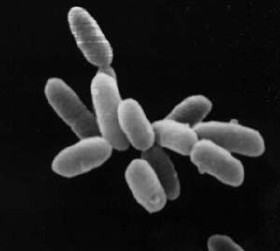Timeline of the evolutionary history of life
Timeline of the Evolutionary History of Life
The Timeline of the Evolutionary History of Life represents an immense span of time from the origin of life on Earth approximately 3.8 billion years ago to the present. Understanding this timeline involves exploring significant events in the development of life, from the earliest microorganisms to the complex web of life that inhabits the planet today.
Origin of Life[edit | edit source]
The origin of life, or abiogenesis, is believed to have occurred around 3.8 to 4.1 billion years ago, shortly after the formation of the Earth 4.54 billion years ago. The earliest evidence of life comes from fossilized microorganisms found in hydrothermal vent precipitates that suggest life began in oceanic environments.
Prokaryotic Life[edit | edit source]
The first life forms were prokaryotes, simple cellular organisms without a nucleus, which appeared about 3.5 billion years ago. These organisms were primarily bacteria and archaea, which thrived in the Earth's early, anaerobic environments. The Great Oxygenation Event (GOE), occurring around 2.4 billion years ago, was a significant turning point, as oxygen began to accumulate in the atmosphere, produced by photosynthetic cyanobacteria.
Eukaryotic Life[edit | edit source]
Eukaryotes, cells with a nucleus, emerged approximately 1.6 to 2.1 billion years ago. This development allowed for more complex life forms. The first multicellular life, such as algae, appeared around 1.2 billion years ago, leading to a diversification of eukaryotic organisms.
Cambrian Explosion[edit | edit source]
The Cambrian Explosion, around 541 million years ago, marks a period of rapid evolution, where most major animal phyla appeared in the fossil record. This event significantly increased the complexity and diversity of life on Earth.
Colonization of Land[edit | edit source]
Life began to colonize land about 500 million years ago, with plants and fungi establishing themselves by 470 million years ago, followed by the first land animals, likely arthropods and then vertebrates. The evolution of plants played a crucial role in creating habitats that enabled further terrestrial life.
Mass Extinctions[edit | edit source]
The history of life is punctuated by five major mass extinctions that have significantly impacted Earth's biodiversity. The most well-known is the Cretaceous-Paleogene (K-Pg) extinction event around 66 million years ago, which led to the demise of the dinosaurs and allowed mammals to rise to dominance.
Rise of Mammals and Humans[edit | edit source]
Following the K-Pg extinction, mammals diversified, leading to the appearance of many modern groups. Humans, belonging to the genus Homo, evolved approximately 300,000 years ago, marking a significant development in the evolutionary history of life due to our impact on the Earth and its biosphere.
Current Biodiversity[edit | edit source]
Today, Earth is home to millions of species, representing the current leaf on the vast tree of life that has grown for over 3.8 billion years. The biodiversity seen today is the result of billions of years of evolution, shaped by natural processes and, more recently, human activity.
Search WikiMD
Ad.Tired of being Overweight? Try W8MD's physician weight loss program.
Semaglutide (Ozempic / Wegovy and Tirzepatide (Mounjaro / Zepbound) available.
Advertise on WikiMD
|
WikiMD's Wellness Encyclopedia |
| Let Food Be Thy Medicine Medicine Thy Food - Hippocrates |
Translate this page: - East Asian
中文,
日本,
한국어,
South Asian
हिन्दी,
தமிழ்,
తెలుగు,
Urdu,
ಕನ್ನಡ,
Southeast Asian
Indonesian,
Vietnamese,
Thai,
မြန်မာဘာသာ,
বাংলা
European
español,
Deutsch,
français,
Greek,
português do Brasil,
polski,
română,
русский,
Nederlands,
norsk,
svenska,
suomi,
Italian
Middle Eastern & African
عربى,
Turkish,
Persian,
Hebrew,
Afrikaans,
isiZulu,
Kiswahili,
Other
Bulgarian,
Hungarian,
Czech,
Swedish,
മലയാളം,
मराठी,
ਪੰਜਾਬੀ,
ગુજરાતી,
Portuguese,
Ukrainian
Medical Disclaimer: WikiMD is not a substitute for professional medical advice. The information on WikiMD is provided as an information resource only, may be incorrect, outdated or misleading, and is not to be used or relied on for any diagnostic or treatment purposes. Please consult your health care provider before making any healthcare decisions or for guidance about a specific medical condition. WikiMD expressly disclaims responsibility, and shall have no liability, for any damages, loss, injury, or liability whatsoever suffered as a result of your reliance on the information contained in this site. By visiting this site you agree to the foregoing terms and conditions, which may from time to time be changed or supplemented by WikiMD. If you do not agree to the foregoing terms and conditions, you should not enter or use this site. See full disclaimer.
Credits:Most images are courtesy of Wikimedia commons, and templates, categories Wikipedia, licensed under CC BY SA or similar.
Contributors: Prab R. Tumpati, MD






